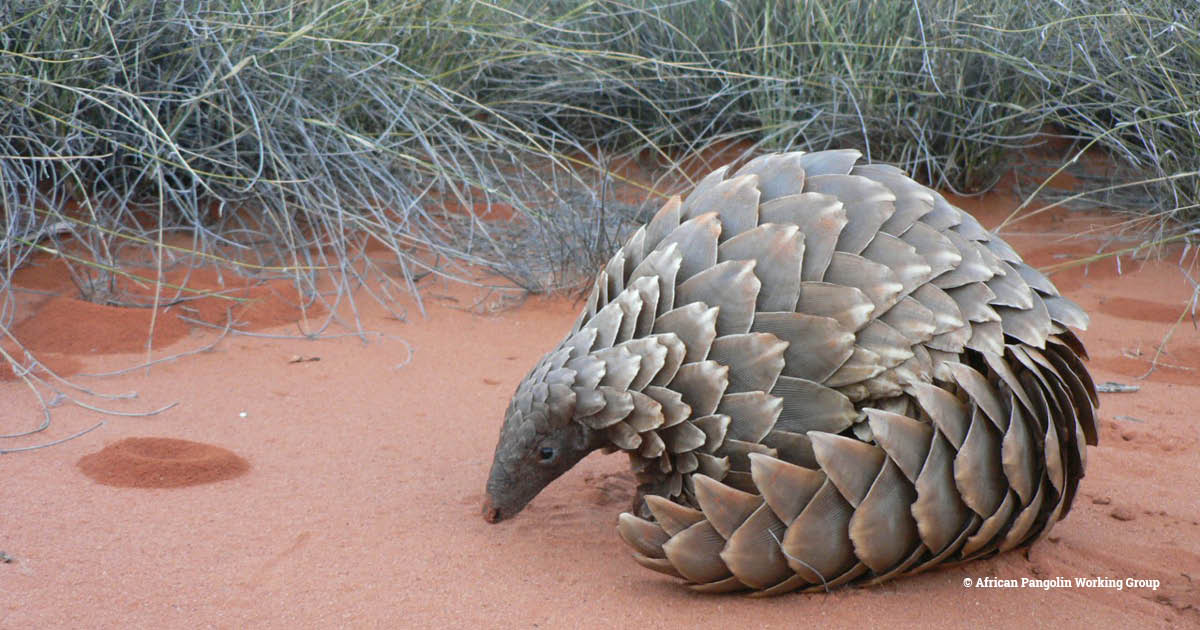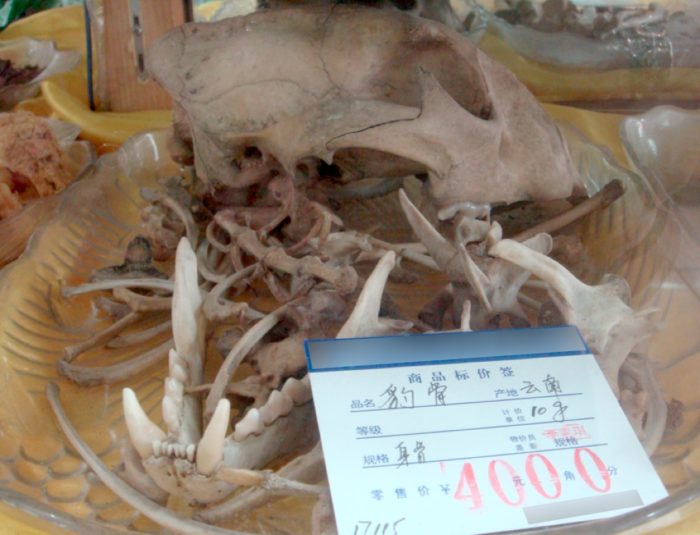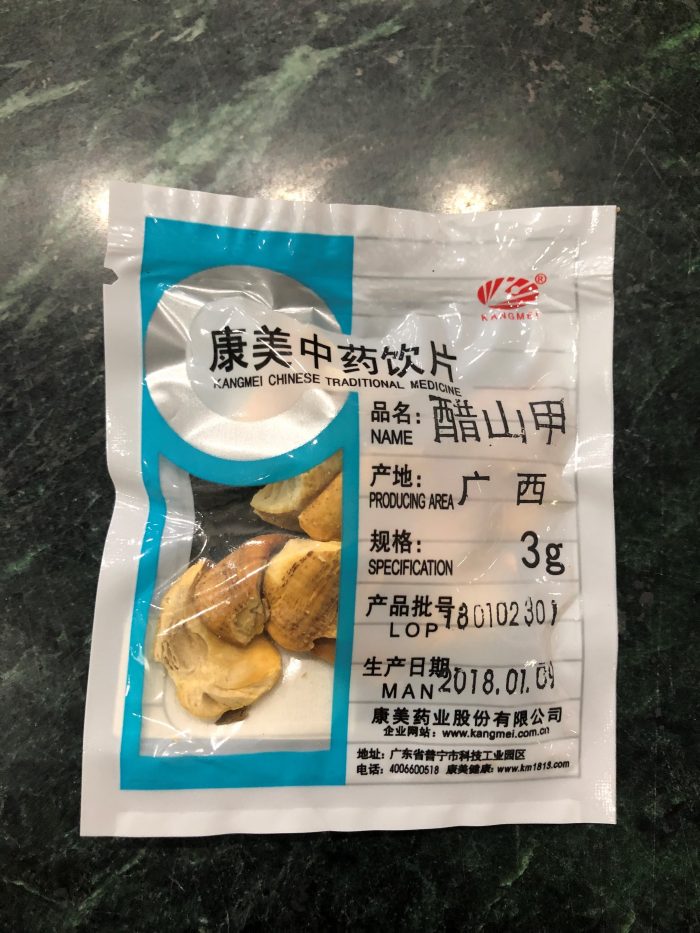Will China’s refusal to close its domestic markets for pangolins mean the end of the species?



This World Pangolin Day (18 February) is an opportunity to highlight the concerns, complications and hopes for the future of pangolin conservation on the back of decisions made at the 19th Conference of Parties (CoP19) to the Convention on International Trade in Endangered Species of Fauna and Flora (CITES) last November.
Last week, the new and revised Resolutions from CITES CoP19 were published on the CITES website.
As a rule, Resolutions and Decisions adopted at CoP enter into effect 90 days after, which sets the date as 23 February 2023 for those arising from CoP19.
Addressing the urgent need to curb the exploitation of pangolins, the UK put forward a working document for CoP19 recommending, among other actions, the closure of legal domestic markets for pangolin specimens which contribute to the poaching and the illegal trade of pangolins.
It was generally supported on the floor but faced objections from China, the world’s largest consumer of pangolin scales.

In the spirit of cooperation, the UK and China negotiated new language which removed the recommendation to close domestic markets altogether. This was not well received by other Parties when presented and was ultimately brought to a vote which favoured the closure of domestic markets, with 78 Parties voting for and 17 against.
In response, China declared that “any decisions interfering (with) our national sovereignty will not be acceptable”, interpreting the amendments as CITES overstepping its scope by interfering with domestic affairs. However, the language in the accepted Resolution is well within the CITES mandate as it clearly references legal domestic markets which contribute to the illegal trade.
China maintains a legal domestic market of pangolin scales for the purposes of supplying traditional Chinese medicine (TCM) manufacturers. The commercial use of pangolin scales in China has been regulated since 2007, supplied by opaque domestic stockpiles to registered hospitals and pharmaceutical companies for manufacture into patented medicine.

The price of trade – dead, descaled pangolins seized in China
Despite this regulation, China has not publicly disclosed the actual quantity of pangolin scales allegedly stockpiled in the country. In 2014, China reported to CITES that the stockpiles of pangolin parts and derivatives were of an “unknown quantity”.
Between 2010-21, mainland China was linked to at least 192 incidents of pangolin scale smuggling, amounting to more than 74.5 tonnes of scales – the equivalent of at least 74,500 dead pangolins – making it consistently one of the countries with the highest volume of pangolin parts seized.
Covert market surveys conducted by EIA confirmed illicit sales of raw pangolin scales in China as recently as 2021. Declared by traders to be illegally obtained and transported through the China-Vietnam border, the scales were sold in Anguo and Bozhou, home to the most prominent TCM ingredient wholesale markets.
These findings provide clear evidence of the role which legal domestic markets have in perpetuating demand and stimulating the illegal procurement of pangolin scales for the purposes of TCM.
China’s amended Wildlife Protection Law, which had been under revision since 2020, was published on 30 December 2022. Worryingly, as outlined by EIA, the law continues to allow the use of pangolins for scientific research and medicine, among other exemptions. It also fails to enacted the CITES recommendations pertaining to closure of domestic markets in pangolins for TCM.

Leopard bone on sale in China (c) EIA
The parallels between pangolins and Asian big cats might be obvious when it comes to CITES, China, TCM and the closure of domestic markets. The domestic market language used in the CITES CoP19 pangolin Resolution mirrors the language added to the CITES Asian big cat Resolution in 2019. However, more than two years later, China has so far shown no intention to close legal domestic leopard bone trade or captive tiger skin trade – and that may well be the path which pangolins follow.
Not all hope is lost – solutions and opportunities may be drawn from the sustained efforts to secure the closure of China’s legal domestic ivory market. In a similar situation to pangolins, China was the world’s largest market for legal ivory, contributing significantly towards the extensive illegal killing of elephants from 2008 onwards after a ‘one off’ sale authorised by CITES stimulated demand for ivory in China and other Asian markets.
As highlighted by EIA’s groundbreaking investigative reports Vanishing Point and The Shuidong Connection, extensive volumes of illicit ivory were trafficked out of Africa after 2008 and laundered into Chinese domestic markets, confirming the country as the world’s main destination for illegal ivory.
Since 2015, numerous countries, including African elephant range states, have closed their legal domestic ivory markets, recognising that these markets only stimulate consumer demand for ivory, perpetuate high levels of illegal killing of elephants and the trafficking in their ivory. In 2017, China closed its domestic market for ivory after a sustained and high-profile campaign in which numerous actors, both government and non-government, including EIA, played crucial roles.
While the CITES ban on international commercial ivory trade and its recommendation to close domestic ivory markets may have helped, it is persistent advocacy at all levels which most likely secured this conservation success.

Vinegar-processed pangolin scales on sale in China as a medicinal product
To this end, EIA encourages source, transit and consumer countries with large pangolin stockpiles to publicly destroy them and appeals to China to follow suit.
Additionally, it is an apt time to update the Pelly Petition filed in the US in 2020 by EIA, the Center for Biological Diversity and the International Environmental Law Project. With China having made clear its intention to not enforce domestic market closure, it is, in effect, undermining the effectiveness of CITES and there may be opportunity for the US Secretary of the Interior to recommend trade sanctions. After all, it was after a similar bilateral approach in 1993 that China’s State Council adopted an order to prohibit the domestic use, manufacture and sale of tiger bone and rhino horn for medicinal purposes. This was followed by the removal of tiger bone and rhino horn from the official list of TCM ingredients and the reduction in the mass production of tiger bone pills and plasters in the 1990s. Tragically, this commitment has been undermined with an exemption for captive-bred specimens.
Overall, despite the general win for pangolins at CoP19, a significant disappointment has been felt with China’s strong opposition to closing domestic markets and so reduce local demand for the world’s most trafficked mammal.
As such, there remains a tough uphill battle to secure a future for the species, although there is already a strong foundation built on the backs of other conservation successes.